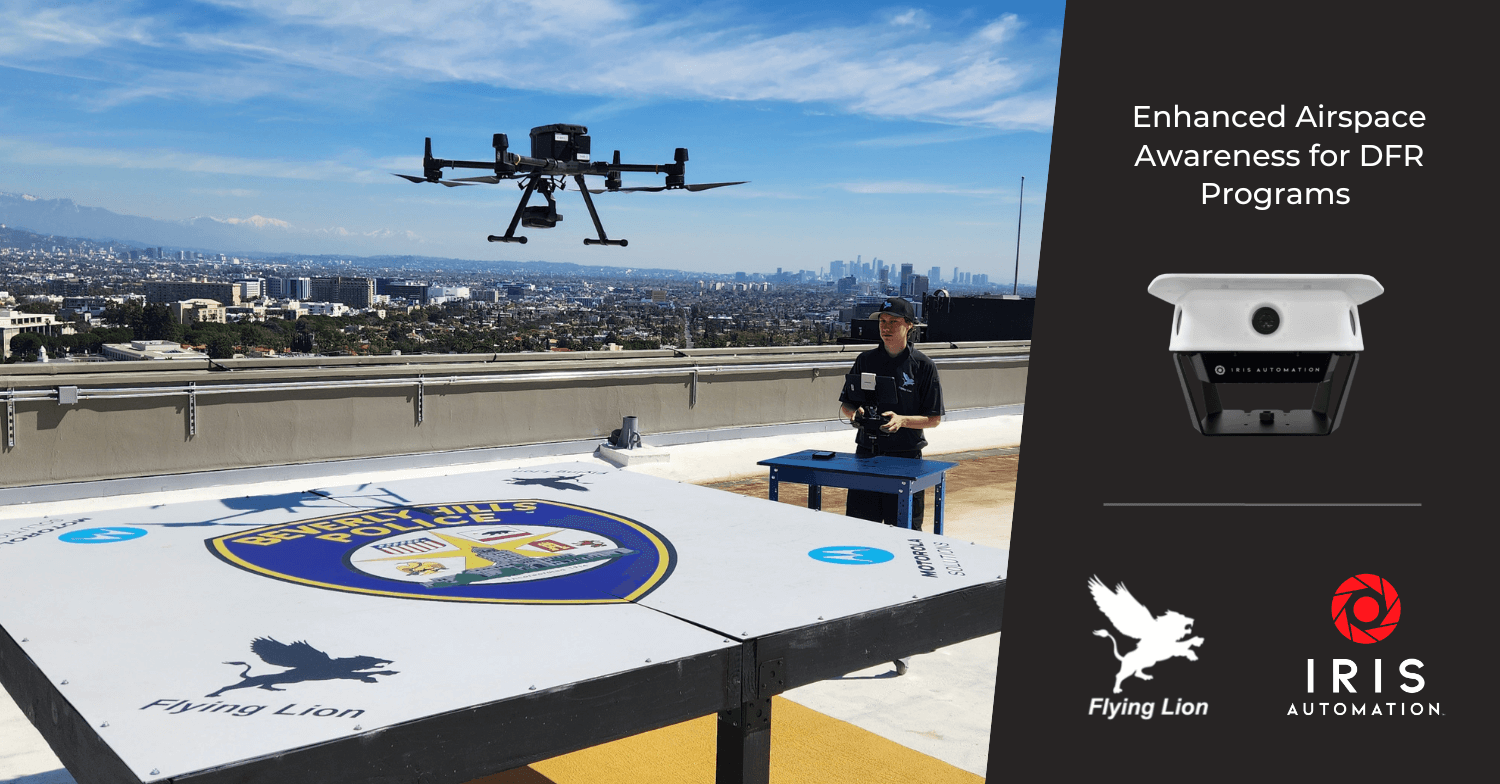
Drone safe navigation tech specialist Iris Automation will be supplying UAV services company Flying Lion with its ground-based Casia G and detect and avoid system to permit faster deployment of urgent first responder missions by client police departments.
Iris Automation has announced the cooperation to assist Flying Lion in the services it provides the various police units and public agencies it works with, particularly in improving their drone as first responder activities. Incorporation of Casia G detect and avoid tech in that mix will allow beyond visual line of sight (BVLOS) flights in the opening phases of that activity without needing to wait for a visual observer to reach the overflown area first.
Flying Lion says it has over 22,000 drone as first responder flight hours to its record thus far in its work with California police forces in Chula Vista, Redondo Beach, Santa Monica, Beverly Hills, and elsewhere. In order to respect Federal Aviation Administration rules in those activities, missions have been flown by remote pilots backed up by on site visual observers. That required human deployment adds time to UAVs reaching targeted areas to stream back imagery for assessments and preparation of emergency action.
Use of Iris Automation Casia G ground-based detect and avoid systems, however, will remove the obligation for a human observer in remotely piloted drone as first responder (DFR) missions, and thereby enhance the services Flying Lion provides police forces in preparing emergency reaction capabilities.
“Flying Lion is proud to partner with such a forward-thinking organization as Iris Automation, to provide a safer environment to conduct DFR operations,” said Flying Lion president Barry Brennan. “The Casia G technology for BVLOS drone flights breaks new ground for public safety – it not only saves time and resources but also allows first responders to better protect the communities they serve.”
Read: Overhead Intelligence and Iris Automation avionics enable EVLOS-BVLOS drone surveys
The way Casia G does that is by using a network of nodes placed in fixed positions around a city, enabling the monitoring of the airspace across the entire area, and providing situational awareness support that human observers previously did during BVLOS emergency response flights.
Once the tech detects other aircraft in the zone of responder operation, either the remote pilot can use the classification and location data of the other vehicle provided to avoid it; or the Casia G platform can be configured to take immediate evasive action automatically.
The result, says Iris Automation CEO Jim Damush, is Casia G will allow Flying Lion to free police department clients from the delays created in BVLOS drone as first responder activity – and do so with a solution that’s as robust as it is affordable.
“Casia G provides an inexpensive and effective way for customers to take advantage of BVLOS flight through increased airspace awareness without the use of visual observers,” says Damush. “The new types of DFR programs are a perfect example, and working with Flying Lion and its incredible work across law enforcement to offer these solutions is an important step.”
FTC: We use income earning auto affiliate links. More.



Comments